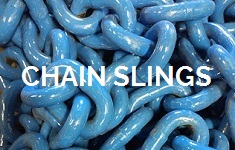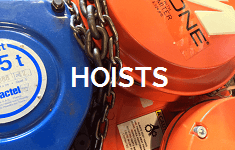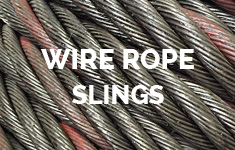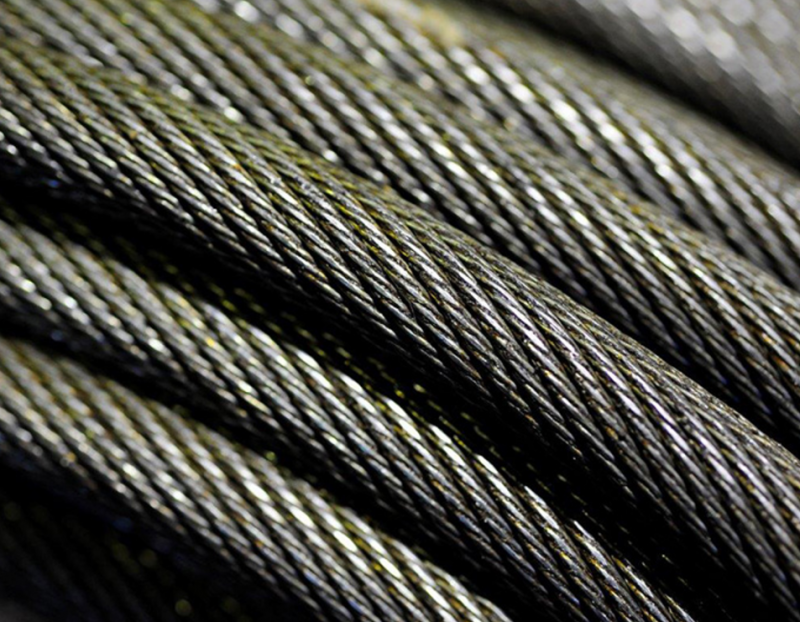Wire Rope Construction : The Production Process Explained
Wires
The majority of steel wires used for making wire ropes are usually manufactured from non-alloy carbon steel having a carbon content of between 0.4 and 0.95%. Since rope wires have a very high strength, they are able to offer support to large tensile forces. They can also run over sheaves even if the diameters are relatively small.
Strands
Cross lay strands has several layers, with the wires crossing each other. The parallel lay strands are prevalently used. Here, the lay length of practically all the wire layers have equal measurements. The wires of any two layers that are superimposed are also parallel. This makes for the linear contact.
However, two inner layer wires support the outer layer wire. Throughout the entire length of the strand, these wires are neighbors. Parallel lay strands are manufactured in a single operation. They have a greater endurance than cross lay strands. Parallel lay strands having two wire layers feature the construction Filler, Seale or Warrington.
Spiral ropes
The strands of spiral ropes are round. They feature an assembly of wire layers, laid helically through a center. At least a single wire layer is laid in the direction opposite to the outer layer. The dimension of spiral ropes can be non-rotating. They have a negligible rope torque under tension.
The open spiral rope is made up of round wires only. The center of the full-locked coil rope and half-locked coil rope is made of round wires, while the locked coil ropes come with at least a single outer layers of profile wires.
The major advantage is that they are constructed in such a way that dirt and water penetration is prevented to a large extent. Hence, protecting them from losing their lubrication. That’s not all, with the proper dimension, the ends of a broken outer wire will be unable to leave the rope.
Stranded ropes
Stranded ropes are a combination of several strands laid around a core in one or more layers in a helical shape. The core can be a fiber core, wire strand core, or independent wire rope core (IWRC). The fiber core features a synthetic material or natural fibers like Sysal.
Even though synthetic fibers are stronger and more uniform, they are unable to absorb many lubricants. Nonetheless, natural fibers are able to absorb about 15% of their weight in lubricant. This helps in protecting the inner wires against corrosion. Fiber cores are very elastic and flexible. The only problem is that they can easily get crushed.
Wire strand core consists an extra wire strand. It is basically used for suspension. The independent wire rope core (IWRC) is very durable regardless of the type of environments it is used in.
The majority of stranded ropes possess only a single one strand layer on top of the core. It is denoted with symbol Z when the strands in the rope are laid in the right direction, while symbol S represents left direction. Regular lay denotes that individual wires were wrapped around centers in a single direction, with the strands wrapped around the core in opposite direction.
Wire ropes featuring multiple strands are less resistant to rotation. They possess more than one strand layers, laid helically around the center. The outer strands are laid in an opposite direction to the underlying strands layers. Ropes having more than two strand layers can be non-rotating as well, while those with two strand layers are usually low-rotating.
Classification According To Usage
Since wire ropes are used for different kinds of tasks, it is expected that they fulfill different requirement. The common uses include:
Running Ropes (stranded ropes)
These are bent over drums, clusters, and sheaves. Hence, they are stressed usually by bending or by tension.
Stationary Ropes, Stay Ropes (spiral ropes, mostly full-locked)
Since they are used for carrying tensile forces, they are usually loaded by fluctuating and static tensile stresses. Wire ropes that are used for suspension are often referred to as cables.
Track Ropes (full locked ropes)
They are used as rails for the cabin rollers or various other loads in cable cranes and aerial ropeways. Dissimilar to running ropes, the curvature of the rollers are not taken on by track ropes. When track ropes are used, the radius and the tensile force increases, as the stresses decrease.
Wire Rope Slings (stranded ropes)
They are used to bind together various kinds of goods. Wire rope slings are stressed by the tensile forces initially by bending stresses. They are bent over the blunt edges of the goods.










